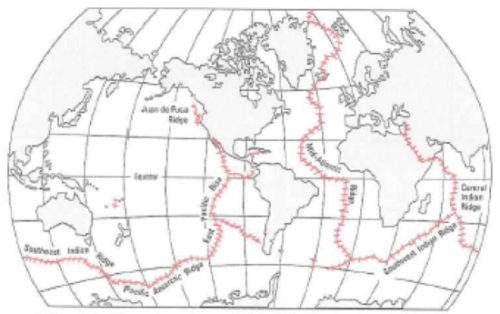 South Dakota circa 1936 during dustbowlA new study published yesterday shows there hasn’t been an increase in extreme rainfall and droughts during the 20th century, even as humans ramped up burning of fossil fuels (coal, oil) in the late 1800s. It also shows that previous centuries show much more extreme weather, even though carbon dioxide levels were far lower than today’s. The study used marine sediments, tree rings, ice cores and mineral deposits to reconstruct weather patterns over the last 1,200 years.
South Dakota circa 1936 during dustbowlA new study published yesterday shows there hasn’t been an increase in extreme rainfall and droughts during the 20th century, even as humans ramped up burning of fossil fuels (coal, oil) in the late 1800s. It also shows that previous centuries show much more extreme weather, even though carbon dioxide levels were far lower than today’s. The study used marine sediments, tree rings, ice cores and mineral deposits to reconstruct weather patterns over the last 1,200 years.
The scientists behind the study examined the interaction between the climate and hydrological (water) cycle in the northern hemisphere. What they found was no evidence to support the United Nation’s Intergovernmental Panel on Climate Change (IPCC) contention that “dry areas will become ever drier and wet ones wetter as the global temperature rises.”
Dr Fredrik Charpentier Ljungqvist, the lead author and a palaeoclimatologist at Stockholm University, explains that climate reconstruction showed a “prominent seesaw pattern of alternating moisture regimes” that has been remained “consistent over the past twelve centuries.” Ljungqvist writes in the journal Nature: “This strongly suggests that the instrumental period is too short to capture the full range of natural hydroclimate variability.”
The climate records, which date back to Viking times, indicate the 20th century was “unexceptional for rainfall and droughts despite assumptions that global warming would trigger more wet and dry extremes.” In fact, “several other centuries show stronger and more widespread extremes,” lead author Fredrik Ljungqvist of Stockholm University told Reuters. “We can’t say it’s more extreme now.”
This runs counter to what many climate models have been spitting out, and Ljungqvist says that’s because they are based on “over-estimated assumptions that rising temperatures would make dry areas drier and wet areas wetter, with more extreme heatwaves, droughts, downpours and droughts.” His reconstructions, based on four unique sets of climate records, shows otherwise.
The study notes that the 10th century was by far the wettest century in the reconstruction, a time “when the Vikings were carrying out raids across Europe and the Song dynasty took power in China.” They also note the 12th century was warm and the 15th century cool, and both centuries were the driest. Their conclusions are based on 196 climate records and say that “variations in the sun’s output were among factors driving natural shifts in the climate in past centuries.” The IPCC has previously reported the sun plays a little to no role in climate variability.
















